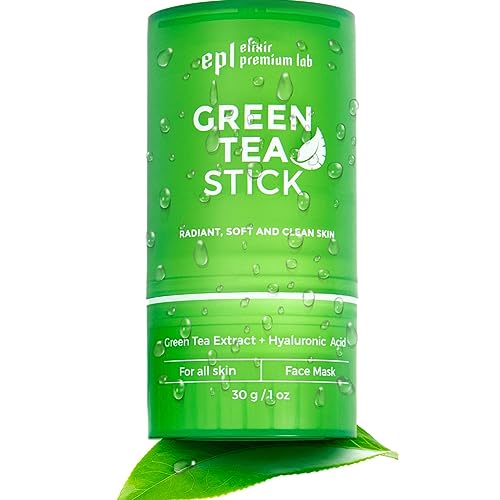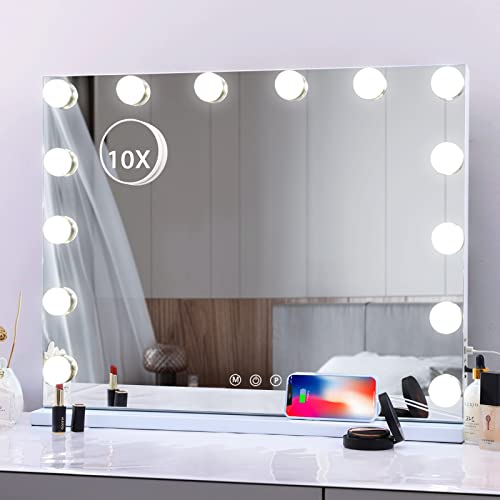
How to address hormonal changes with face masks for teenage skin?
As teenagers navigate through the ups and downs of hormonal changes, their skin can often bear the brunt of these fluctuations. This step-by-step guide offers a caring approach to help them address these changes using face masks. By providing clear instructions, it empowers teenagers to understand and manage the effects of hormones on their skin. With the focus on face masks as a skincare solution, this guide aims to give teenagers a valuable tool in their quest for healthier, happier skin.
Top-rated face masks for teen skin



Identify the hormonal changes
- Identify the hormonal changes occurring in your body. Observe for signs such as increased oil production, acne breakouts, or changes in skin texture.
- Understand these changes to determine the right face mask for your specific needs.
- Analyze your skin’s condition and choose a suitable face mask accordingly.



Choose the appropriate face mask
Research and select a face mask that is suitable for teenage skin and addresses the specific skin concerns caused by hormonal changes. Look for ingredients like clay, salicylic acid, or charcoal, which can help control oiliness and reduce acne. Read product labels and online reviews to gather information about the effectiveness of the mask for teenage skin. Consider consulting a dermatologist for personalized recommendations.
Cleanse your face
Before applying the face mask, take the crucial step of thoroughly cleansing your face. Begin by using a gentle cleanser that suits your skin type. Apply the cleanser to your damp face and gently massage it in circular motions, focusing on areas prone to oiliness or buildup. Rinse your face with lukewarm water, ensuring that all traces of the cleanser are removed. This process will effectively eliminate any dirt, oil, or leftover makeup residue, allowing the face mask to penetrate deeply into your skin, maximizing its benefits.



Apply the face mask
- Prepare: Wash your hands thoroughly with soap and water before applying the face mask. Make sure your face is clean and dry.
- Choose: Select the face mask that suits your skin type and concerns. Read the instructions carefully to understand the application process.
- Apply: Using clean hands or a brush, apply a thin and even layer of the chosen face mask to your face. Start from the center and work your way out, gently spreading the mask over your skin.
- Avoid: Take care to avoid the delicate eye and lip areas while applying the mask. These areas are sensitive and should be left untouched.
- Follow: Follow the instructions provided with the mask to ensure proper application. Some masks may need to be left on for a specific duration, while others may require rinsing off immediately.
- Relax: Once the mask is applied, relax and let it work its magic. You can use this time to unwind, read a book, or listen to some soothing music.
- Remove: After the recommended time has passed, gently rinse off the face mask with lukewarm water. Pat your face dry with a clean towel.
- Moisturize: Finish off by applying a moisturizer suitable for your skin type. This will help lock in the benefits of the face mask and leave your skin feeling nourished.
Remember, consistency is key when it comes to face masks. Regular use, as per the recommended frequency, will yield the best results for your skin. Enjoy the pampering and the refreshed feeling afterward!
Leave the mask on
After applying the face mask evenly onto your cleansed skin, it’s important to let it work its magic. Check the packaging for the suggested duration, which typically ranges from 10 to 20 minutes. During this time, find a comfortable spot to relax and unwind, allowing the mask to deeply penetrate your skin and deliver its beneficial ingredients.
Step 2: Use this time to relax and unwind.
While the face mask is doing its job, take advantage of this moment to indulge in some much-needed self-care and relaxation. Find a quiet and comfortable space where you won’t be disturbed. You can lay down, sit back, or even take a warm bath if you prefer. Use this time to disconnect from any distractions, listen to calming music, read a book, or simply close your eyes and focus on your breathing. Let the stress melt away as the mask revitalizes your skin.
Remember, following the recommended time for the mask is crucial to achieve the desired results. By allowing the mask to sit for the suggested duration and taking this opportunity to unwind, you’ll maximize the benefits and enjoy a rejuvenating experience for both your skin and mind.



Rinse off the mask
- Gently rinse off the face mask using lukewarm water.
- Make sure to thoroughly remove all traces of the mask from your skin.
- Use your fingertips to gently massage your skin in circular motions while rinsing to help remove the mask.
- Pay extra attention to areas where the mask may have clung, such as the hairline and around the nose.
- Once all the mask is removed, pat your face dry with a clean towel.
- Enjoy the clean and refreshed feeling of your skin after rinsing off the mask.
Pat dry and moisturize
After rinsing off the mask, gently pat your face dry with a clean towel. Avoid rubbing your skin, as this can cause irritation. Once your face is dry, apply a small amount of lightweight, oil-free moisturizer to your skin. Some examples of oil-free moisturizers are Cetaphil Daily Facial Moisturizer and Neutrogena Oil-Free Moisture. Massage the moisturizer into your skin using upward circular motions until it is fully absorbed. This will help keep your skin hydrated and nourished without clogging your pores.
Repeat regularly
To achieve optimal results, make sure to include face masks in your skincare routine 1-2 times a week. By doing so, you will effectively address hormonal changes and promote the health and clarity of your skin. Consistency is key, so be sure to follow this regimen regularly.
Consult a dermatologist if needed
If you are experiencing severe hormonal changes or persistent skin issues, consult a dermatologist. They will provide personalized guidance and recommend additional treatments if necessary. To find a dermatologist, start by researching reputable clinics or hospitals in your area. Once you have identified a potential dermatologist, call the clinic and schedule an appointment. During the appointment, be sure to discuss your symptoms and concerns in detail, providing any relevant medical history. The dermatologist will then conduct a thorough examination of your skin and may request additional tests or procedures to accurately diagnose your condition. Based on the diagnosis, they will develop a treatment plan tailored to your needs, which may include medications, topical treatments, or other interventions. Follow the dermatologist’s instructions carefully and attend follow-up appointments as recommended to monitor your progress. Remember, seeking professional help from a dermatologist can greatly improve the health and appearance of your skin.
Final Thoughts
In conclusion, incorporating face masks into a teenager’s skincare routine can be a beneficial way to address hormonal changes and improve their skin health. By following the steps outlined in this blog post, teenagers can effectively manage their skin concerns and achieve a healthier complexion.
Necessary Supplies






Skincare Solutions for Teens
Choosing between this and that: Home remedies for skincare | #dermatologist
Step-by-Step Guide to Using Face Masks for Teenage Skincare
- Start by cleansing your face with a mild cleanser to remove any dirt or makeup
- Gently pat your face dry with a clean towel
- Apply a thin layer of the face mask to your face, avoiding the eye and lip area
- Leave the mask on for the recommended time indicated on the packaging. This is usually around 10-15 minutes
- Use this time to relax and unwind, perhaps by listening to music or reading a book
- After the designated time, rinse off the face mask with lukewarm water. Make sure to remove all traces of the mask
- Pat your face dry with a clean towel and follow up with a moisturizer to hydrate your skin
- Use the face mask once or twice a week, depending on your skin’s needs. Avoid overusing it as it can cause irritation
- Remember to read the instructions and warnings on the face mask packaging before using it
Frequently Asked Questions about Face Masks Skincare for Teens
Are there any face masks that are specifically designed for hormonal changes during teenage years?
Yes, there are face masks available that are specifically designed to address hormonal changes during teenage years. These face masks often contain ingredients that help control oil production, reduce acne breakouts, and balance the skin’s pH levels. They may also include ingredients like salicylic acid, benzoyl peroxide, clay, or sulfur, which are known to be effective in treating teenage acne. Additionally, some face masks for teenagers may have soothing properties to help calm inflamed skin and reduce redness. It is advisable to consult with a dermatologist or skincare professional to determine the best face mask for individual needs during this period.
How often should teens use face masks in their skincare routine?
Teens should use face masks in their skincare routine around 1-2 times a week. Overusing face masks can irritate the skin and disrupt its natural balance, so it is important to use them in moderation. Additionally, the frequency may vary depending on the individual’s skin type and concerns. Consulting with a dermatologist or skincare professional can provide personalized recommendations for the specific needs of each teen.
Can face masks help with reducing oily skin for teenagers?
Yes, face masks can help with reducing oily skin for teenagers. Certain types of face masks, such as those containing clay or charcoal, can effectively absorb excess oil and impurities from the skin. These masks work by drawing out the oil and unclogging pores, which can help to reduce the appearance of oily skin. Additionally, some face masks also have ingredients like salicylic acid or tea tree oil, which have anti-inflammatory and antibacterial properties, and can help to control oil production. However, it is important to note that while face masks can provide temporary relief for oily skin, they are not a long-term solution. Maintaining a regular skincare routine and using oil-free products can also help in managing oily skin for teenagers.

Hey, I’m Ava Wilson—a skincare enthusiast and a certified esthetician. I’m dedicated to sharing my knowledge and empowering others to achieve healthy, glowing skin through simple, effective routines and natural remedies. Join me on this exciting skincare journey, and let’s unlock your skin’s potential for a confident, beautiful you.





